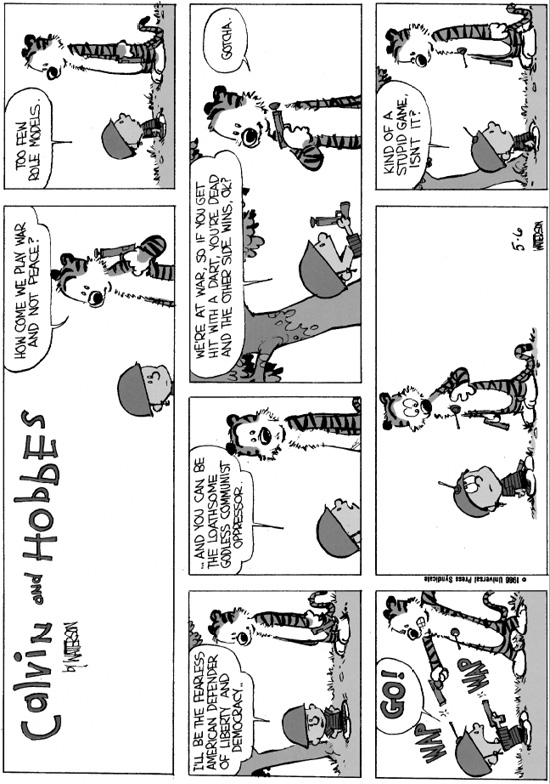BILL WATTERSON
On my desk is a framed print of the 1986 Calvin and Hobbes cartoon included here, and I have it there for two reasons. One is its antiwar satire, climaxing in Calvin’s remark, “Kind of a stupid game, isn’t it?” Not an original thought, to be sure, but a perfect distillation of a common one. (It evokes the computer’s comment on thermonuclear war in the 1983 film War Games: “the only winning move is not to play.”) The other reason is the more broadly suggestive implication of the first two panels. “How come we play war and not peace?” asks Hobbes, and Calvin answers, with a sophistication beyond his years, “Too few role models.” Anyone making an anthology like this one is responding to the problem Calvin identifies, and hoping to offer a partial remedy: to help people learn how to “play peace” if they so desire.
Calvin and Hobbes ran from 1985 to 1995; it was created by Bill Watterson (b. 1958), and concerns a boy named Calvin and his stuffed tiger Hobbes. Watterson grew up in Chagrin Falls, Ohio, drew his first cartoon when he was eight, in fourth grade wrote to Charles Schulz (who wrote back), drew cartoons all through grammar and high school. He went to Kenyon, majored in political science, drew Michelangelo’s Creation of Adam on the ceiling of his dorm room. After graduation he worked for four years in an advertising agency, then turned back to what he loved and created the comic strip. While drawing the strip he steadfastly resisted all commercialization of it and was an eloquent advocate for the medium he was working in. He stopped drawing the strip ten years later, explaining that he had done what he could do “with the constraints of daily deadlines and small panels.”
